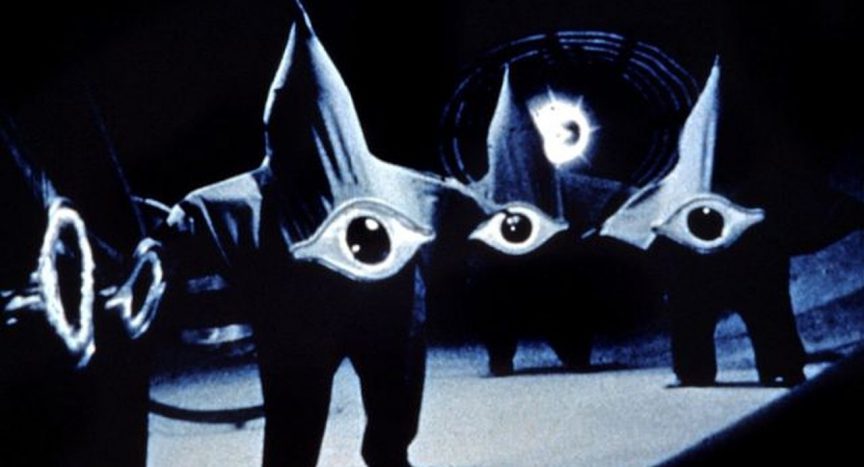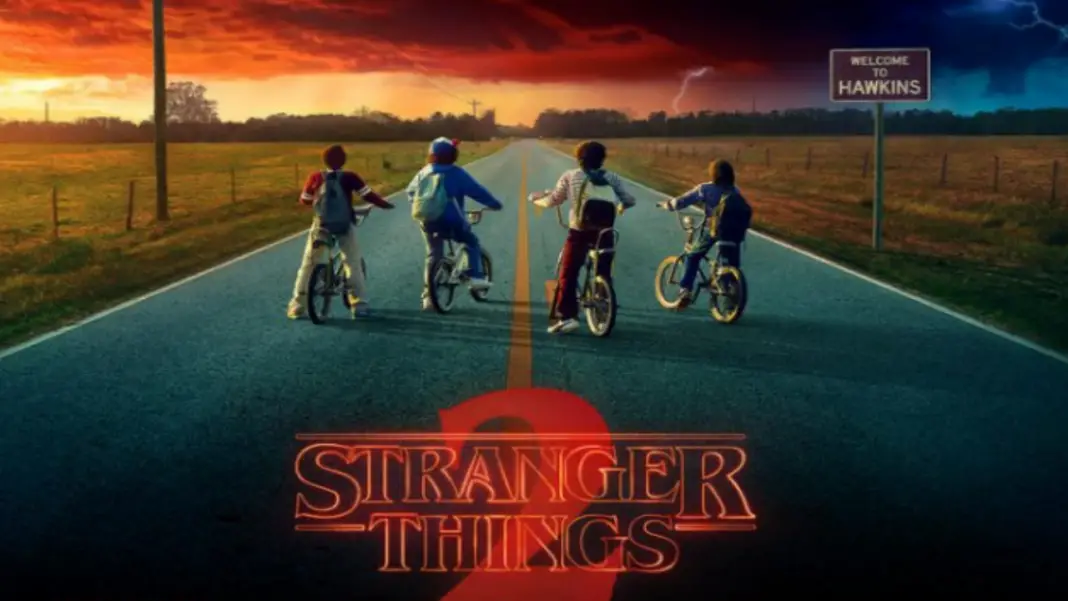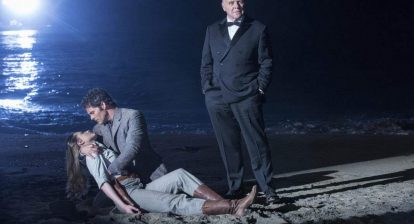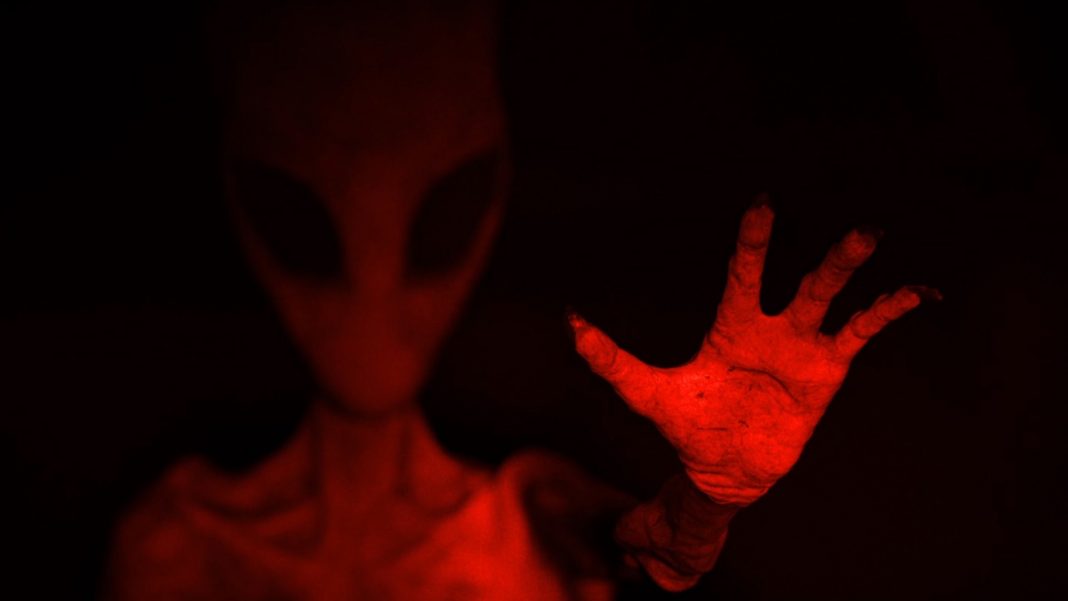Two years after Gojira rampaged through Tokyo for the first time in 1954, Warning From Space revisited the city, this time bringing extraterrestrial life to Japan. In the first sci-fi movie produced in color in that country, there’s a slow-build with people spotting UFOs. Then mysterious aliens begin to appear. What they want is a mystery until the end of the first act, when director Kôji Shima takes audiences aboard their starship.
Before that moment, Shima only shows us the aliens in quick shots, focusing more on the frightened reactions of the people they’re approaching. Once they’re standing in all of their glory, they’re adorable. Paria, as they identify themselves later on, are shaped like starfish with a giant eye on their chest. In the Japanese version of the film, their language sounds identical to the teacher talking in Charlie Brown. It’s translated along the side of the screen in huge letters. They’re not here to invade Earth; they’re here to save it. To that end, the leader of the Paria assumes the human form (despite saying “It has a very large lump in the center of its face”) of a famous dancer, Hikari Aozora (Toyomi Karita).
Hideo Oguni—who wrote Iriku, The Seven Samurai, The Hidden Fortress, and Throne of Blood for the legendary Akira Kurosawa—adopted Warning From Space from a novel by Gentaro Nakajima. The adaptation wears its themes on its sleeve. The fate the Paria are trying to save the humans from requires mankind to launch all of their atomic bombs at once into the Rogue Planet R which will collide with Earth if they don’t. The Paria chose Japan because “only one country” has felt the pain of a nuclear weapon. Like Gojira, this film is very much a reaction to the atomic bombs the U.S. dropped on Hiroshima and Nagasaki during World War II.

RELATED: Bigger is Better: Old-School Giant Monster Flicks That Shockingly Hold Up
Unlike Gojira, Warning From Space keeps a playful tone despite the heavy subject matter. There are hinjinx with the dancer and the Paria sharing identical bodies. The aliens themselves, as described above, are goofy and adorable. It doesn’t feel like a movie about ending nuclear proliferation, but there’s not really another reading.
While the aliens are, intentionally it seems, silly-looking, some of the other effects are impressive for the time period. Since Dr. Kamura (Bontarô Miake) works as an astronomer, many of the shots of the spaceship and Planet R are through a telescope. It’s much easier to move a little yellow dot out of an orange dot to show a landing ship headed for Earth than it is to do the same thing with models. It’s successful. So are the effects for the lead Paria in human form. She fades in and out of rooms to teleport. She jumps impossibly high to get to the ball during a game of tennis. It’s a lot of fun.
That sense of play leaves near the end of Warning From Space, when the city is being evacuated and then destroyed. It’s a stark juxtaposition. The effects remain good as the production crew stages the demolition of the city.
RELATED: 101 Horror Movies You Must See Before You Die and 101 Sci-Fi Movies You Must See Before You Die Edited by Stephen Jay Schneider Review
The jarring mix of tones keep Warning From Space from succeeding. The message about the importance of ending nuclear proliferation hits audiences over the head so hard that they’re unlikely to hear it. The cast is huge, and it’s hard to determine whose story it is or how any of the humans shape the outcome other than Dr. Matsuda (Isao Yamagata), who is a minor character before becoming ridiculously important. As the first sci-fi film in color, Warning From Space is an important footnote in the history of Japanese film, it’s just not a very good one.

The Arrow Video Blu-Ray has some excellent extras. The most interesting is the inclusion of both the Japanese version of the film and the original American adaptation, which moves scenes around and censors some things for American audiences. It also has a pair of essays about the artistic influences (first pressing only), a new set of translated subtitles, a commentary track by film historian Stuart Galbraith IV, trailers, an image gallery, and reversible case artwork.
Wicked Rating – 6/10
Director: Kôji Shima
Writer: Hideo Oguni
Stars: Keizô Kawasaki, Toyomi Karita, Bin Yagisawa
Release: October 13, 2020 (Arrow Video Blu-ray)
Studio/ Production Co: Toho Company, Daiei Studios
Language: Japanese
Length: 87 Minutes
Sub-Genre: Sci-fi






